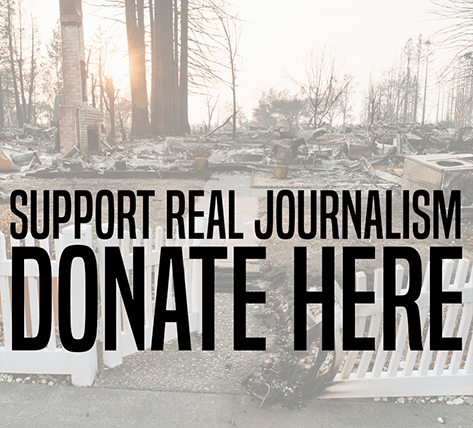On July 4, President Trump signed his “Big Beautiful Bill,” a 330-page gift basket of conservative dreams wrapped up in one legislative act. Immigration enforcement, the dismantling of green energy projects, reductions in Medicare and Medicaid, tax breaks for the wealthy — all of these widely discussed initiatives and more were years-long hopes for the Republican Party, and all came to fruition in the one bill.

Kyle Tisdel.
But how will the bill affect oil and gas development, particularly in New Mexico? The state is the second-biggest oil producer in the country and for decades has relied on federal help to police environmental infractions in the oilfield.
Kyle Tisdel, senior attorney with the Western Environmental Law Center, spoke with Capital & Main from his office in New Mexico about the implications of the Big Beautiful Bill on New Mexico’s most prominent industry, and what those implications could mean for the state’s environment. This interview was originally recorded July 16 for New Mexico PBS for its weekly news program New Mexico in Focus.
This interview has been edited for clarity and brevity.
Capital & Main: The president’s Big Beautiful Bill spends an awful lot of language talking about oil and gas regulations in Alaska and offshore drilling. What is in it that actually pertains directly to how oil and gas operations work in New Mexico?
Kyle Tisdel: It’s a great question. And I think we should maybe start with the beginning of the Trump administration.
And on Day One, there’s a series of executive orders and energy emergencies that are being declared. And what that did was set this policy agenda for “energy dominance.” And the notion of that is that we are going to prioritize oil and gas extraction above other uses of our public lands and resources.
And so what the bill does is essentially change the fundamental structure of how our lands are managed for fossil fuel extraction. One where for the last 50 years we have balanced — or endeavored to balance — a variety of uses, including oil and gas, but things like timber and water and recreational values and scenic values on our public lands. And what the bill does is it prioritizes and elevates oil and gas above those other uses. And of course, New Mexico has about 42 million acres of public lands that are open to mineral extraction.
So it basically gives industry a blank check to say which of those 42 million acres they want to lease and develop. And it removes the discretion from the agency to tell them no, to tell them that we’re going to prioritize other uses.
It’s also important to note that there are things called split estate lands. This is particularly important for our farmers and ranchers who might own the surface estate, but [the sub-surface minerals are] managed by BLM [the Bureau of Land Management]. And the bill eliminates the consultation requirement for industry to reach out or for BLM to reach out to landowners and say, “Hey, this is a use of your sub-surface estate that we want to use for oil and gas.” And it eliminates the ability for BLM to say no to that.
“The energy emergency, as far as I can tell, is something entirely contrived by the Trump administration to prioritize fossil fuel exploitation on our public lands.”
So jumping back to the first part of your answer there, are you saying these executive orders sort of work hand in glove with the Big Beautiful Bill? Are they really two parts of the same thing?
And second: What is the energy emergency exactly?
The Trump administration set this “energy dominance” agenda from day one. And what we’re seeing now is the implementation of that agenda through a lot of different ways.
The Big Beautiful Bill is the congressional implementation. It does a lot of things, right, that are probably a lot of awful things.
But when it comes to the energy component of that, it really does aim to implement and fulfill the wish list of the oil and gas industry, everything that they’ve been wanting to do for a long time. Which is, again, to remove the agency’s discretion to limit oil and gas on public lands and give industry the unfettered ability to access our public lands. And it does so in a way that strips the agency of their ability to implement stipulations or mitigation measures to make oil and gas less harmful on our public lands. The bill even strips out those types of minimal protections on our public lands.
The energy emergency, as far as I can tell, is something entirely contrived by the Trump administration to prioritize fossil fuel exploitation on our public lands. And it does so in a way that both then puts its thumb on the scale of oil and gas, but it makes it harder to develop renewable resources on our public lands. And it also even does things like prioritize coal extraction, so that coal can be shipped to foreign markets.
So, if there’s truly an energy emergency, you would think, “Well, this is an all-of-the-above sort of strategy we need to unleash American energy.”
But what it aims to do actually, is unleash a certain type of American energy in a way that will take public goods, resources, minerals and allow those to be privatized for private profit by Big Oil.
You brought up removing a lot of regulations and rules, and that’s been a huge part of the president’s whole agenda going forward.
But another part of that agenda was this whole DOGE agency, Elon Musk’s Department of Government Efficiency. And what that’s been doing is removing people. So, you get rid of regulations and then you’re getting rid of people as well who would be enforcing the regulations that remain.
I’m wondering if, in your work, you’ve come across a lack of people in places like the Environmental Protection Agency, the Bureau of Land Management and other agencies within the Department of Interior. Have you seen that so far?
I think what we’ve all seen from DOGE in those efforts is sheer chaos at the federal level in terms of firing of federal employees and then rehiring them, and freezes by the courts. But what it has done, I think more than anything, is a couple different things.
One is that it has eliminated key positions within our agencies. These are individuals who are career employees and who have particular expertise, whether that be a particular species or segment of stream, that biologists might be responsible for tracking and managing. Or they have particular expertise on the regulation of oil and gas and the technologies and techniques that industry employs.
We are seeing this loss of capacity within our agencies. And sometimes those folks are very critical to fulfilling the oversight and management mission that our agencies are intended to employ. The other sort of element of this is that we are losing a lot of these career employees.
But “Who are we left with?” is the other question. And I wouldn’t want to ever disparage the hard-working career employees that we have. But the folks that do tend to stick around are those that are aligned with the president’s agenda in terms of how our public lands should be managed.
And so you also are seeing not only the loss of critical employees, but also this culture shift within the agencies and the loss of, maybe, unbiased folks within our agencies to something that’s maybe a little bit more aligned with the priorities of the administration.
So, this makes me wonder: The feds aren’t the only people out there doing enforcement and regulation. The state has a large role in this as well.
Do you think that the state of New Mexico and its agencies have the ability to pick up the slack where the federal government is laying off? Are there enough people? Do they have the budgets to do this?
Yeah, we have wonderful people at the state at the Oil Conservation Division. We work fairly closely with them on several initiatives. They are good, smart people, but they are also inherently understaffed and lacking capacity.
So, you know, there are very distinctive missions between an agency like the Oil Conservation Division and the responsibilities of our federal government in the management of our federal public lands. Certainly there is overlap, but in terms of analyzing the impacts — the environmental or community or cultural impacts — of oil and gas extraction on our public lands, the Oil Conservation Division is not tasked necessarily with doing that level of analysis or review of oil and gas.
So there is a large and significant role for states, including New Mexico, to fill some of the gaps. But the missions and the directives are distinctive.
“I think the question becomes: How will we emerge from the ruins of the moment that we’re in?”
Along these same sort of lines, there’s a huge amount of funding that’s being cut by the federal government to states in all sorts of different directions.
A sizable portion of both the state’s Oil Conservation Division budget and the Environment Department budget rely on federal funds to hire people in various capacities. Do you see that having a knock-on effect as well?
Certainly. I think there are certain funding streams — oil and gas well clean-up, for example — where there’s a large amount of money coming from the federal government to the states — including New Mexico — to clean up an epidemic of orphaned wells in the state.
Thus far, that money hasn’t stopped flowing, but it certainly is at risk of doing so.
And a lot of the initiatives for things like environmental justice, or outreach to communities, or engagement with frontline communities on really critical issues, that money has dried up, and we have seen a pretty dramatic pullback in terms of the federal government reaching out and engaging with communities.
So all of that money has already been pulled away.
A large part of what you do at the Western Environmental Law Center is sue the federal government on environmental grounds, personal health, grounds to keep the place cleaner. That’s kind of your job.
How do you see things changing at a Justice Department that has been seemingly weaponized against those particular ideas? Are you already seeing the effects of that? Are you already seeing the effects of a lack of people at the Justice Department or people who have been brought in specifically to fight against these sorts of topics?
We’re certainly seeing that in both staffing capacity and the position that the federal government takes on certain matters and litigation. We certainly see a shift from the positions that they took during the Biden administration and shifting course now, during the Trump 2 administration.
But I think that the real question that I’m grappling with as an attorney is there is a tremendous amount of damage that is being done at multiple levels. And we’ve touched on many of those in our conversation today. But I think the question becomes: How will we emerge from the ruins of the moment that we’re in?
And I think that the reality is, we won’t be able to rebuild a lot of the destruction that is already taking place. That would take a generation perhaps to rebuild that. Nor do I think we necessarily would want to, right?
It’s not like before the Trump administration we had intact ecosystems, and we were addressing the climate crisis with the sense of urgency that we should, and we were engaging communities and people like we should have. There’s a lot that we already needed to build upon and shift in terms of our approach to address the crises of the moment.
There’s a lot of progress that we can make in this moment at the state level in New Mexico to help hold the oil and gas industry accountable for all of the exploitation of New Mexico resources over the years, to clean up after themselves and to really set the course for what not only responsible oil and gas development looks like, but really the next stage: How do we transition away from oil and gas as a state? How do we do that financially? How do we do that economically?
And that is the overarching question that I think we’re asking ourselves at this moment: What can we do to really set the course for the type of future that we want to live in, rather than just being so forlorn about the ruins of the moment?
Copyright 2025 Capital & Main

 Latest NewsDecember 8, 2025
Latest NewsDecember 8, 2025
 Striking BackDecember 4, 2025
Striking BackDecember 4, 2025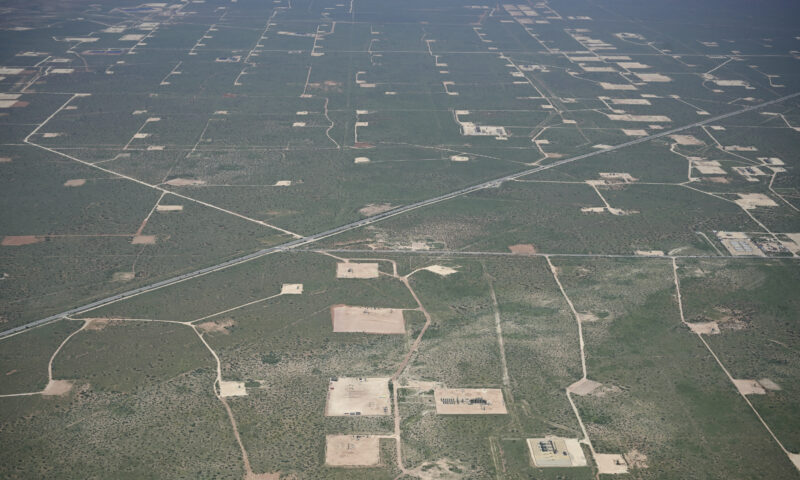
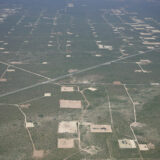 The SlickDecember 2, 2025
The SlickDecember 2, 2025
 Latest NewsDecember 1, 2025
Latest NewsDecember 1, 2025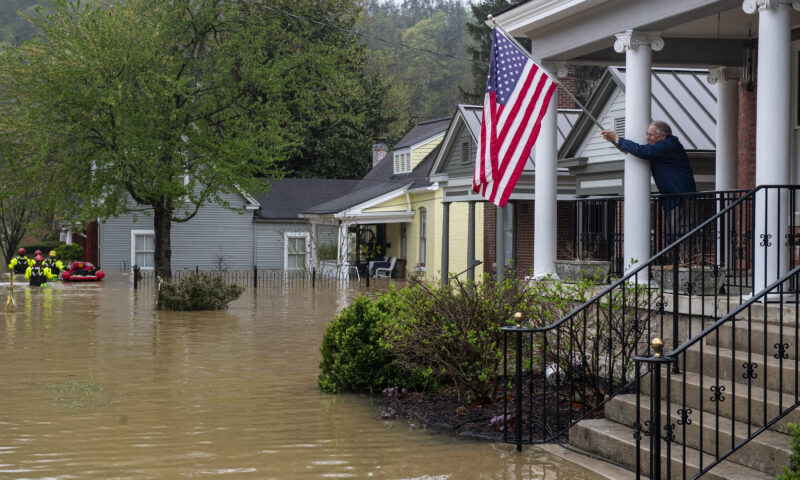
 Dirty MoneyDecember 3, 2025
Dirty MoneyDecember 3, 2025
 Child FarmworkersDecember 5, 2025
Child FarmworkersDecember 5, 2025
 Column - State of InequalityDecember 4, 2025
Column - State of InequalityDecember 4, 2025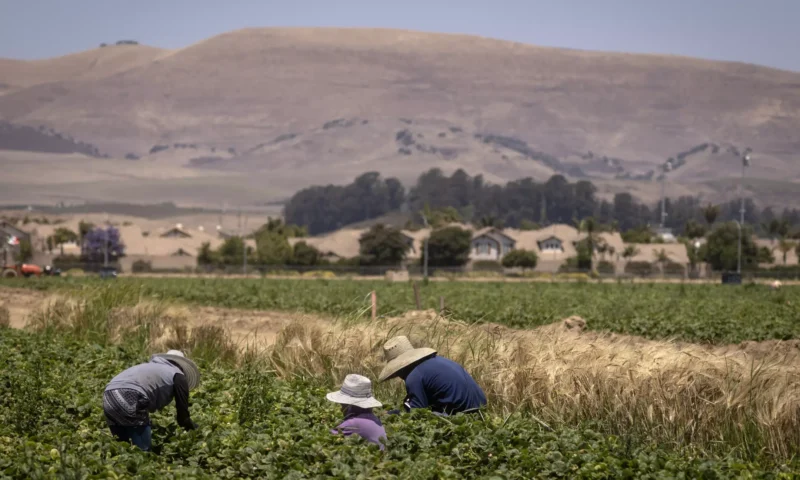
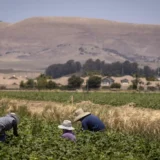 Latest NewsDecember 10, 2025
Latest NewsDecember 10, 2025


